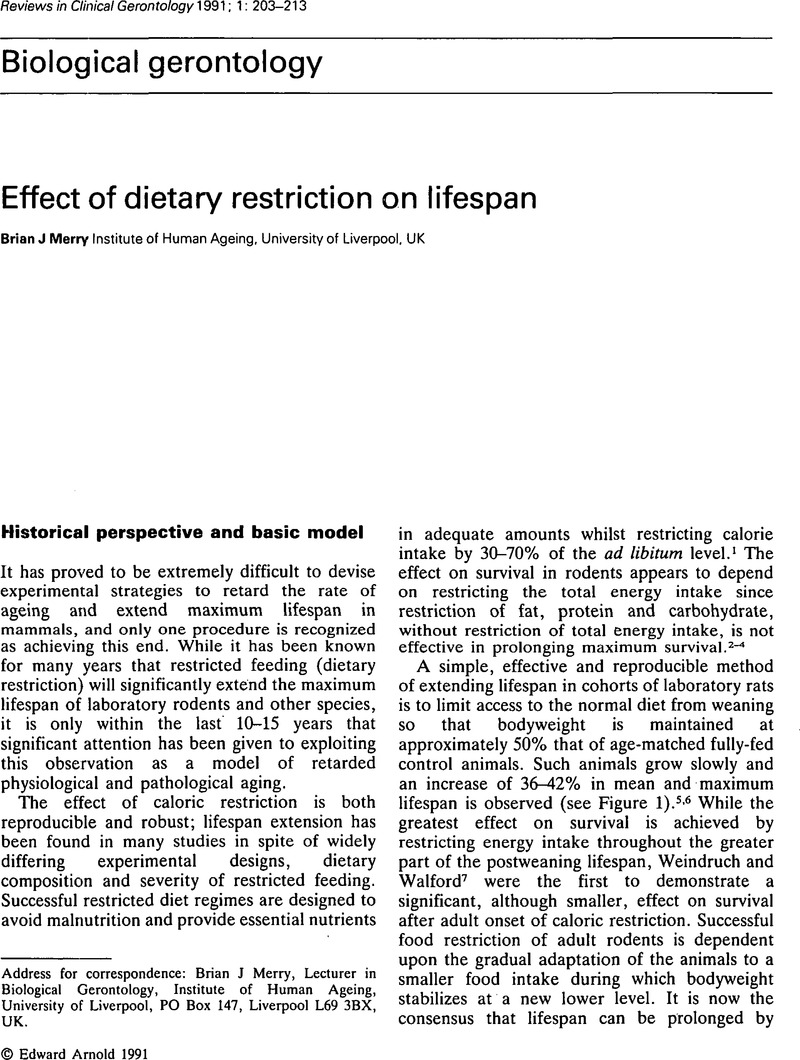Crossref Citations
This article has been cited by the following publications. This list is generated based on data provided by Crossref.
Fairweather, DS
1992.
Aging of the heart and the cardiovascular system.
Reviews in Clinical Gerontology,
Vol. 2,
Issue. 2,
p.
83.
Merry, BJ
1995.
Effect of dietary restriction on aging – an update.
Reviews in Clinical Gerontology,
Vol. 5,
Issue. 3,
p.
247.
MERRY, B. J.
2000.
Calorie Restriction and Age‐Related Oxidative Stress.
Annals of the New York Academy of Sciences,
Vol. 908,
Issue. 1,
p.
180.
2001.
Abstracts of Original Communications.
Proceedings of the Nutrition Society,
Vol. 60,
Issue. 4a,
p.
1A.
2002.
Abstracts of Original Communications.
Proceedings of the Nutrition Society,
Vol. 61,
Issue. 3a,
p.
98A.
Langley-Evans, Simon C.
and
Sculley, Dean V.
2005.
Programming of hepatic antioxidant capacity and oxidative injury in the ageing rat.
Mechanisms of Ageing and Development,
Vol. 126,
Issue. 6-7,
p.
804.
Langley-Evans, Simon C.
Bellinger, Leanne
Sculley, Dean
Langley-Evans, Alison
and
McMullen, Sarah
2006.
Early Life Origins of Health and Disease.
Vol. 573,
Issue. ,
p.
87.
Cox, Lynne S.
2009.
Live Fast, Die Young: New Lessons in Mammalian Longevity.
Rejuvenation Research,
Vol. 12,
Issue. 4,
p.
283.



